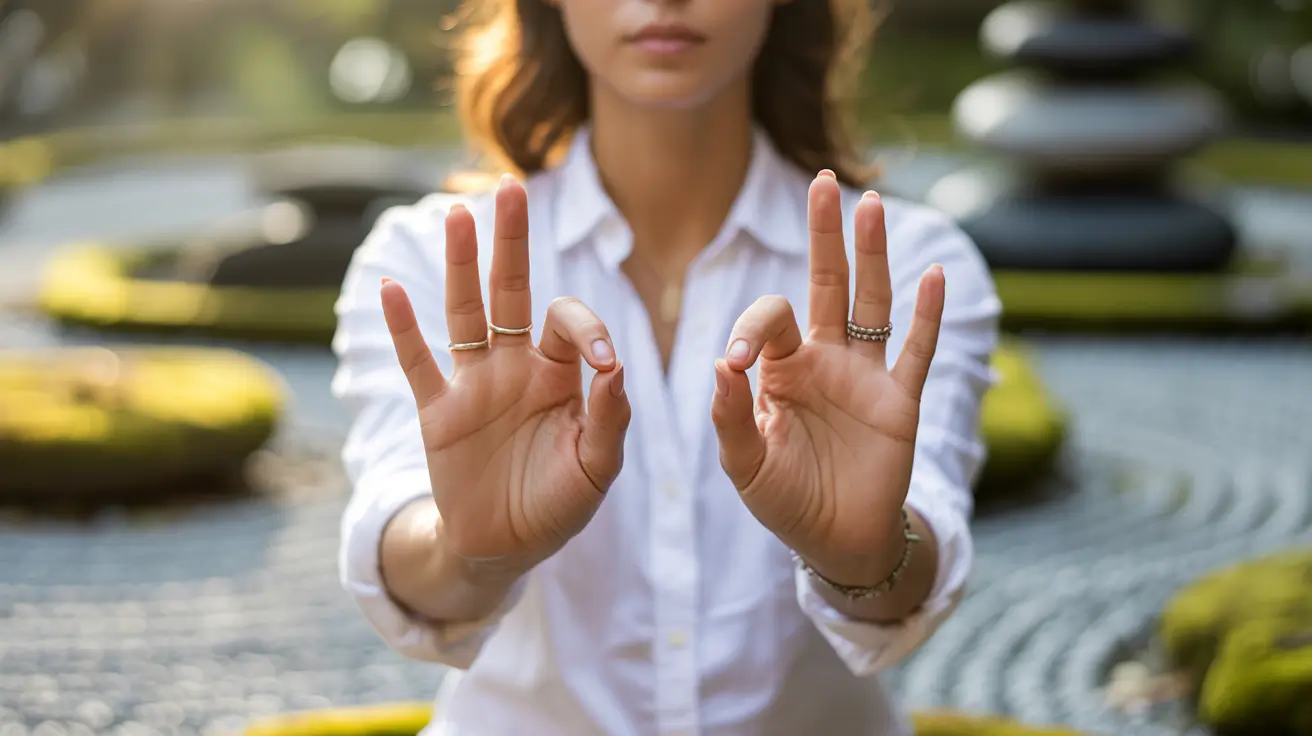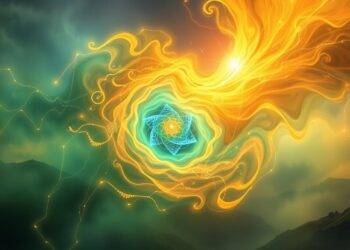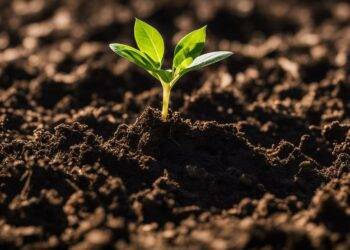“The hands have the power to convey what words cannot.” – Dalai Lama
Hand gestures called mudras are key in many spiritual traditions. They help bring inner peace and express feelings. These gestures can change how we feel and think, connecting us to the world around us.
By learning about mudras, you can feel closer to the universe’s energy. This energy flows through our hands, guiding us.
Key Takeaways
- Mudras are symbolic hand gestures used in various spiritual, cultural, and healing practices.
- There are over a hundred recognized mudras across different traditions, each with specific meanings and applications.
- Mudras can influence physical, mental, and spiritual well-being, and are used in meditation, yoga, and other disciplines.
- Mudras channel energy, enhance concentration, and promote inner harmony.
- Exploring the rich history and significance of mudras can deepen your understanding of nonverbal communication and symbolic expression.
Understanding the Ancient Art of Mudras
Mudras, the sacred hand gestures of ancient traditions, hold a deep meaning in spiritual and cultural practices. These symbolic movements come from the ancient Vedas of India. They have captured the hearts and minds of people worldwide, crossing time and space.
Origins and Historical Significance
The history of mudras goes back to the second millennium BCE, mentioned in Vedic scriptures. At first, they were used in Vedic rituals to call upon deities and change consciousness. Later, mudras became a key part of the Buddhist tradition, used to express emotions and connect with the divine.
Cultural Impact Across Traditions
Mudras have made a lasting impact on cultures and art, from Buddhist art to traditional dances. These sacred hand gestures have crossed religious lines. They serve as a common language, linking the physical and spiritual worlds.
Role in Spiritual Practices
In spiritual practices, mudras are seen as powerful tools for energy release and direction. Each mudra has a specific purpose, affecting our health and well-being. They help deepen our connection with the divine, increase self-awareness, and bring inner peace and harmony.
“Mudras are not merely physical movements, but rather, they are the manifestation of the inner journey of the soul.”
Hand Gestures and Mudras: Fundamental Principles
Explore the fascinating world of hand gestures and mudras. These sacred expressions have crossed time and cultures. They connect the physical and spiritual worlds through yoga and meditation.
Mudras focus on the fingers, each linked to a energy center and chakra. The thumb stands for fire element, showing willpower and individuality. The index finger is for air element, representing knowledge and wisdom.
The middle finger is about ether or space element, showing balance and spiritual connection. The ring finger is for earth element, symbolizing stability and grounding. Lastly, the little finger is for water element, bringing adaptability and creativity.
Mudras are key for meditation techniques, aligning energy, and spiritual growth. They help deepen mindfulness, balance energy, or find inner peace. Exploring mudras can be a life-changing journey.
“The hands are the subtle instruments of human consciousness.” – B.K.S. Iyengar
Discover the power of these sacred hand gestures. They open new paths to self-discovery, healing, and spiritual growth. Dive into the ancient art of mudras and unlock their wisdom for personal and spiritual transformation.
The Five Elements and Finger Connections
The ancient wisdom of energy centers and chakras sees the human body as a small universe. Each finger is linked to one of the five essential elements: fire, air, earth, water, and ether. Knowing the symbolic meanings of these connections can help you balance your energy and deepen your spiritual practices.
Fire Element: Thumb Symbolism
The thumb is connected to the fire element, Agni, and the Manipura Chakra in the Solar Plexus. It stands for your willpower, individuality, and ego. It acts as a channel for energy and personal growth.
Air Element: Index Finger Properties
The index finger is tied to the air element, Vayu. It represents your knowledge, wisdom, and communication skills. Focusing on this finger can improve your mental clarity and ability to express yourself.
Earth, Water, and Ether Elements
The middle finger is linked to the ether or space element, Akash, and the Vishuddha Chakra in the throat. It symbolizes balance, patience, and spiritual connection. The ring finger is connected to the earth element, Prithvi, representing stability, responsibility, and grounding. The little finger is associated with the water element, Jala, and the Swadhisthana Chakra. It reflects your adaptability, creativity, and intuition.
| Finger | Element | Chakra | Symbolic Meaning |
|---|---|---|---|
| Thumb | Fire (Agni) | Manipura | Willpower, individuality, ego |
| Index | Air (Vayu) | – | Knowledge, wisdom, communication |
| Middle | Ether (Akash) | Vishuddha | Balance, patience, spiritual connection |
| Ring | Earth (Prithvi) | Muladhara | Stability, responsibility, grounding |
| Little | Water (Jala) | Swadhisthana | Adaptability, creativity, intuition |
Understanding the symbolic meanings and spiritual associations of each finger can unlock the power of these energy centers and chakras. This can enhance your spiritual practices and bring balance, clarity, and well-being into your life.
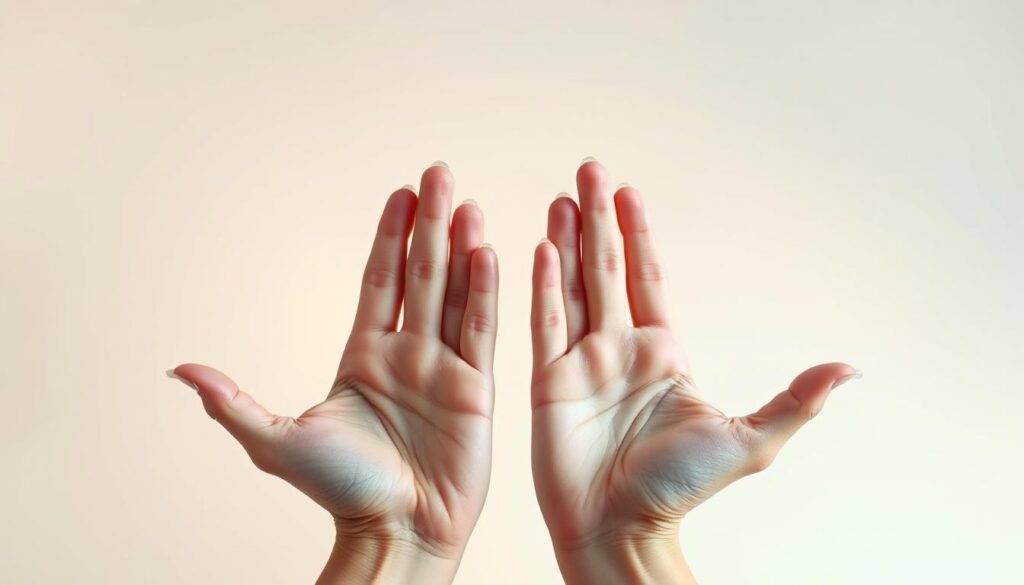
Essential Buddhist Mudras for Spiritual Practice
In the world of Buddhist spirituality, five hand gestures and mudras stand out. They symbolize enlightenment and a connection to the divine. Each mudra has its own meaning and purpose, often seen in Buddhist art.
The Dharmachakra Mudra is well-known. It shows the Teaching of the Wheel of Dharma. The index finger and thumb form a circle, representing the Buddha’s first sermon.
The Dhyana Mudra, or Yoga Mudra, is a key pose of Buddha Shakyamuni. It shows deep meditation and enlightenment. The hands rest in the lap, palms up.
The Bhumisparsha Mudra shows the Buddha touching the earth. This mudra represents his determination and the earth’s support. The right hand reaches down.
- The Varada Mudra symbolizes generosity and compassion. It shows the bestowal of blessings. The palm faces outward, fingers extended.
- The Abhaya Mudra conveys fearlessness and protection. It dispels all fears. The hand is raised in reassurance.
These five mudras are just the start of Buddhist spiritual practices. They serve various purposes, like teaching, meditation, and protection. They inspire and captivate practitioners worldwide.
| Mudra | Meaning | Significance |
|---|---|---|
| Dharmachakra Mudra | Teaching of the Wheel of Dharma | Represents the Buddha’s first sermon and the transmission of fundamental teachings |
| Dhyana Mudra | Meditation | Characteristic pose of Buddha Shakyamuni, signifies deep meditation and enlightenment |
| Bhumisparsha Mudra | Touching the Earth | Depicts the Buddha’s gesture of calling the earth as a witness to his enlightenment |
| Varada Mudra | Generosity and Compassion | Represents the bestowal of blessings and the offering of gifts |
| Abhaya Mudra | Fearlessness and Protection | Conveys the message of reassurance, safety, and the dispelling of all fears |
These hand gestures and mudras are key in Buddhist art and practice. They help practitioners connect with the Buddha’s teachings. They foster inner peace, wisdom, and enlightenment.
Healing and Therapeutic Applications of Mudras
Mudras, the sacred hand gestures, have deep healing powers. They can improve your physical, mental, and emotional health. They also help balance your energy centers and chakras.
Physical Health Benefits
Some mudras target specific body areas for healing. For example, Vayu Mudra helps with stress and digestion. Prithvi Mudra boosts strength and skin glow. Adding these hand yoga practices to your routine can greatly improve your health.
Mental and Emotional Wellness
Mudras also benefit your mind and emotions. Jnana Mudra improves focus and emotional release. Anjali Mudra fosters humility and positive thoughts. These hand gestures help you find inner peace and emotional balance.
Energy Balance and Chakra Alignment
Mudras are believed to channel life force energy in the body. They help align your chakras, improving your overall well-being. Prana Mudra boosts energy and sleep, while Padma Mudra promotes purity and love.
Using mudras with mindful breathing and meditation enhances their effects. This combination brings greater harmony and balance. Discover the healing power of hand yoga through your fingertips.
Meditation and Mindfulness Through Hand Gestures
Mudras, the ancient art of sacred hand gestures, are key in meditation and mindfulness. These hand positions help bring inner peace, clarity, and awareness. Adding mudras to your spiritual routine can open up new levels of meditation and mindfulness.
The Dhyana Mudra, or “meditation mudra,” is well-known for meditation. It shows the balance between method and wisdom in seeking enlightenment. Resting your hands in this way brings calm and focus, helping your mind settle into deep contemplation.
There are many hand gestures for meditation and mindfulness. The Gyan Mudra, for example, boosts knowledge and concentration by stimulating the root chakra. The Hakini Mudra balances the brain’s hemispheres, leading to a focused mind.
Regular use of hand mudras can reduce stress and improve thinking. Studies show these gestures can enhance brain function and emotional control by stimulating nerve endings in the fingers.
“Mudras are more than just shapes made with hands; they are gestures that have meanings or intentions.”
Adding mudras to your meditation and mindfulness can be deeply transformative. These ancient hand gestures help you connect with the present, find inner peace, and unlock your spiritual potential.
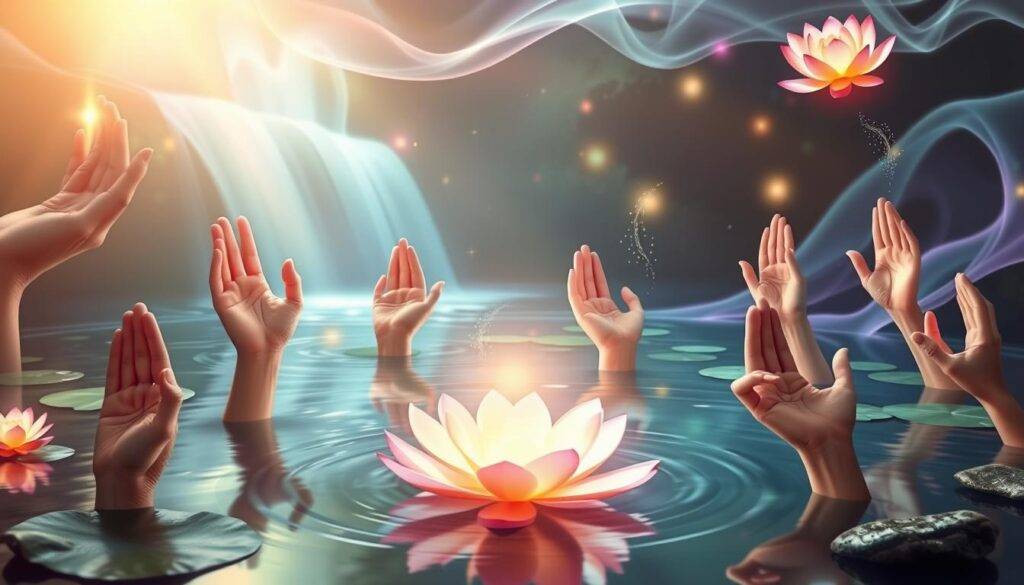
| Mudra | Benefits |
|---|---|
| Dhyana Mudra | Promotes mental clarity, concentration, and inner peace during meditation. |
| Gyan Mudra | Enhances knowledge, concentration, and cognitive function. |
| Hakini Mudra | Harmonizes the brain’s left and right hemispheres, improving focus and intuition. |
| Varada Mudra | Symbolizes generosity, compassion, and charity, often used in loving-kindness meditations. |
| Vajrapradama Mudra | Signifies unshakeable trust, grounding, and calming of the nervous system. |
Sacred Mudras in Yoga and Dance
Yoga and traditional dance share a deep bond through mudras, or hand gestures. These movements are more than just pretty; they’re key to the spiritual and expressive sides of these ancient practices.
Integration with Asana Practice
In yoga, mudras are woven into asana sequences to boost energy flow and deepen spiritual connection. By using hands and fingers in special ways, yogis can tap into subtle energies. This helps them reach a state of deep mindfulness and inner awareness.
Expressive Arts and Movement
Mudras are not just for yoga; they’re also a big part of Indian traditional dances. Dancers use hand gestures to tell stories, show emotions, and reach spiritual heights. The mix of mudras, facial expressions, and body movements creates a powerful visual language. It can take the audience on a journey to higher states of being.
Traditional Dance Forms
Indian classical dances like Bharatanatyam and Odissi are full of mudras’ expressive power. These hand gestures, based on ancient texts like the Nāṭyaśāstra, are crucial for storytelling, showing feelings, and representing divine figures. Mastering mudras is what makes a dancer truly skilled, taking the dance to a deep spiritual and cultural level.
“Mudras are the language of the soul, a sacred means of expressing the inexpressible through the eloquence of the hands.”
Modern Applications and Daily Practice
In today’s fast world, hand yoga and mudras offer a calm break. These sacred hand gestures can be part of your daily life. They help with stress, focus, and emotions, making life richer.
Mudras aren’t just for meditation; they fit into daily life easily. Try Gyan Mudra with your morning coffee for better brain function. Vayu Mudra can ease joint pain and boost energy. Varuna Mudra helps with emotional ups and downs, keeping blood flow and skin healthy.
Regular hand yoga practice has amazing effects. It boosts your health, mind, and spirit. From better immunity to hormone balance, mudras are a key self-care tool.
| Mudra | Benefits |
|---|---|
| Gyan Mudra | Enhances brain activity and improves concentration |
| Vayu Mudra | Helps with gas problems, knee and joint pain, and conditions like spastic paralysis and Parkinson’s disease |
| Varuna Mudra | Aids in improving blood circulation and skin problems while maintaining cholesterol levels |
| Surya Mudra | Assists in weight loss, controlling obesity, improving metabolism, and vision |
So, start using hand yoga and mudras in your life. Discover the power of your hands for a better you.
“The hands are the mirror of the soul. Through them we can discover the innermost secrets of the human being.”
– Gregor Lersch
Conclusion
Hand gestures and mudras are a deep and ancient practice for spiritual growth. They help with healing and self-expression. These sacred hand positions come from ancient India and are used in many spiritual traditions today.
By learning and using these hand positions, you can experience big changes. They can help you focus during meditation, improve your health, or express yourself more deeply. The world of hand mudras has a lot to offer.
As you keep exploring yourself and your spirituality, remember the connection between mind, body, and spirit. Let the wisdom of these ancient traditions guide you. Let your hands connect you to the divine. Discover the inner balance and harmony that Reiki meditation can bring as you explore the power of hand mudras.
FAQ
What are mudras?
Mudras are symbolic hand gestures used in spiritual, cultural, and healing practices. They have specific meanings and can influence physical, mental, and spiritual well-being.
Where do mudras originate from?
Mudras come from ancient India, first mentioned in the Vedas around 2000 BCE. They were used for rituals and to invoke gods’ favor. Later, they evolved in Buddhist practices for meditation and rituals.
How are mudras formed?
Mudras are formed by finger combinations. Each finger is connected to an element: thumb for fire, index for air, middle for ether, ring for earth, and little for water.
What are the five essential Buddhist mudras?
The five key Buddhist mudras are Abhaya (peace, protection), Dharmachakra (teachings), Bhumisparsha (enlightenment), Varada (generosity), and Dhyana (meditation).
What are the healing and therapeutic applications of mudras?
Mudras are believed to heal and improve physical, mental, and emotional health. They help balance energy and enhance meditation and rituals.
How are mudras used in meditation and mindfulness practices?
Mudras are crucial in meditation and mindfulness. For example, Dhyana Mudra is used for meditation, symbolizing inner peace and clarity.
How are mudras integrated into yoga and traditional dance forms?
In yoga, mudras enhance energy flow and spiritual experience. In Indian classical dance, they tell stories and express emotions.
How can mudras be incorporated into daily life?
Mudras can be used daily for stress relief, focus, and emotional balance. Regular practice improves overall well-being.
























































